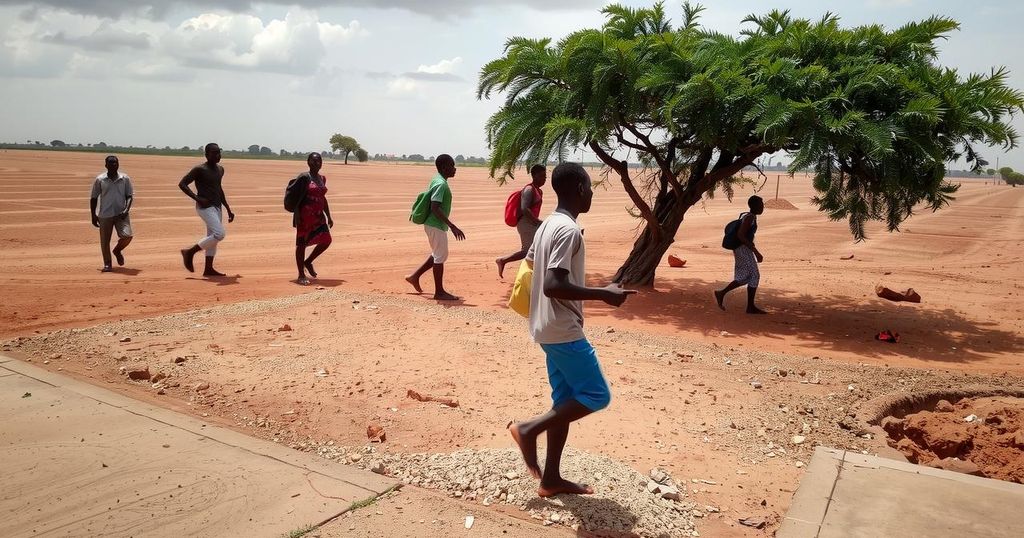Sudan is suffering from a prolonged conflict and severe climate change impacts, with millions displaced and thousands dead. Over 12 million people are affected, and calls for climate-sensitive humanitarian aid are growing. The situation represents Sudan’s worst humanitarian crisis, necessitating urgent interventions that consider both immediate and long-term needs.
Sudan is currently grappling with an intersection of crises characterized by ongoing armed conflict and the severe impacts of climate change. As the conflict nears its second anniversary, residents face dire conditions, including mass displacement due to violence and repeated flooding. The clashes between the Sudanese Army and the paramilitary group known as the Rapid Support Forces have resulted in significant loss of life, displacing millions while exacerbating existing vulnerabilities among the population due to climate-related disasters.
Reports indicate that over 20,000 individuals have lost their lives in this conflict, which has rendered more than 12 million people either refugees or internally displaced. Furthermore, severe flooding has submerged numerous displacement camps, leading to increased suffering. The scale of the flooded area has been compared to being larger than that of Germany. This scenario paints a bleak picture of what has been termed Sudan’s worst humanitarian crisis to date.
As calls for urgent humanitarian assistance intensify, it has become evident that any aid provided must consider the impacts of climate change. Activists and observers have stressed the necessity for aid interventions that are sensitive to climatic conditions, warning that failure to do so may result in efforts being rendered ineffective. As highlighted by a prominent activist, “Making aid climate-sensitive is no longer a privilege—it’s essential. Otherwise, efforts will be washed away by the floods.”
the special vulnerability of Sudan to climate change is emphasized in reports from the United Nations, detailing frequent occurrences of drought and erratic rainfall patterns. This compounding of crises necessitates immediate interventions that address urgent humanitarian needs while also strategizing for long-term solutions to the escalating climate crisis affecting the nation.
Sudan is facing a dual crisis marked by prolonged conflict and exacerbating climate change effects, with significant impacts on its population. The ongoing hostilities have led to high casualty rates and widespread displacement, compounded by severe flooding that affects vulnerable communities. Understanding the multifaceted challenges posed by these two crises is crucial for developing effective humanitarian strategies and addressing the needs of millions in this context.
In conclusion, Sudan’s current humanitarian landscape is profoundly influenced by the dual crises of war and climate change. The intersection of violent conflict and extreme weather events has led to unprecedented displacement and suffering among the civilian population. The urgent need for climate-sensitive humanitarian aid is paramount, not only to provide immediate relief but also to ensure the sustainability of such efforts in the face of ongoing and future climate challenges.
Original Source: shiawaves.com






